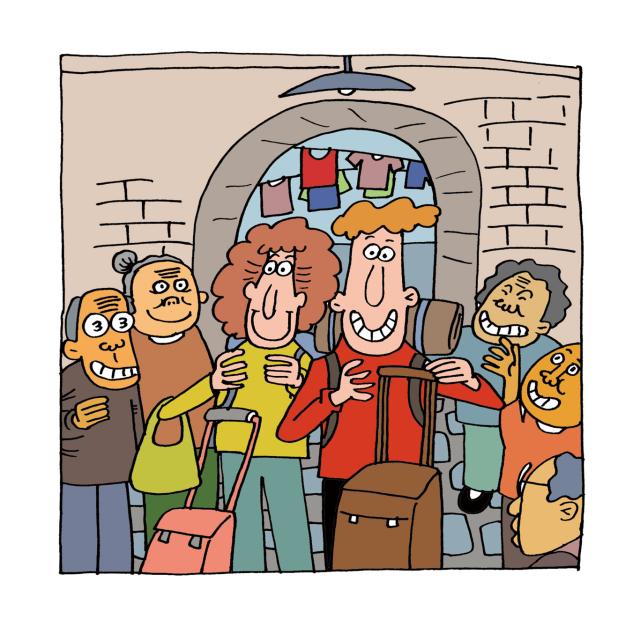Shanghai is a city that’s constantly in flux, with buildings shooting up and tumbling down almost daily; swanky shopping malls and office buildings popping up where residential compounds once sat. Perhaps this is why, when you ask people who have never visited Shanghai or those who have only passed through for a couple of days to describe the city, the answers tend to focus on the flashy stuff: skyscrapers, fancy Bund-side restaurants and designer stores. It’s all business and money. It’s a description of Shanghai that is partly true, the side you often see in pictures, but it paints a picture of a city that is impersonal and impenetrable.
When I first moved to Shanghai with my partner, we were also guilty of selling the city short in this same way. We thought of it as a homogenous entity, where people live in fancy-looking skyscrapers detached from the hustle and bustle on the street. We started out in a towering apartment building in a nondescript compound of towering apartment buildings – the sort of place you could go days without seeing neighbors. The daily commute involved a lot of time glued to my phone screen, and the pristine-yet-rammed shopping streets felt devoid of culture. For a while, life in the big city for me consisted of being surrounded by people (around 24 million people call Shanghai home), but not really connecting. That old adage “you’re never lonelier than in a crowd” would regularly pop into my head.
But beyond the sleek and shiny exterior, there’s another side of the city where cold metropolitan vibes fade into the background. Wander behind the flashy malls and away from the skyscrapers, and you’ll stumble upon thriving longtang – small residential lanes built entirely upon community and tradition.
Walking down a buzzing longtang feels a little like entering a time warp. A mash-up of European- and Chinese-style architecture dominates the aesthetics in the form of low-rise traditional Shanghainese shikumen houses – typical of the late-19th and early-20th centuries. Elderly neighbors gather round games tables playing mahjong; children do their homework under the supervision of parents or grandparents; laundry hangs overhead from bamboo poles popping out of windows; and a collection of small stores cater to basic needs – hairdressers, street food vendors and grocers.
Today, the traditional lane houses are typically divided into separate apartments housing multiple families who have lived there for generations, with shared courtyards and kitchens acting as hubs for neighbors to converge. After only two weeks of living in a characterless-but-comfortable apartment complex, we decided to say our goodbyes and found ourselves a charming (if a little rough around the edges) studio apartment in one of these houses to experience another side of Shanghai.
It’s safe to say, living in such close quarters, you can forget about privacy. Thanks to a vigilant neighborhood watch, made up of keen-eyed elderly ayi and shushu (“aunties” and “uncles”) who keep everyone informed of comings and goings, word travels fast around the lanes.
When we rocked up, poorly packed suitcases in tow, a welcoming committee of sorts was on hand to greet and grill us in a game of 20 questions: “Where are you from?” “Are you married?” “How long will you stay?” “Who packed this?” “Where’s your coat? You must be freezing…”
As outsiders in the community, the next couple of weeks were a crucial exercise in trust building. Our new neighbors would tell us of their woes of previous laowai (foreigners) coming in: “They stole my parking space and couldn’t speak any Chinese,” “They would always leave the gate open,” “Two years ago someone paid their water fee five days late.” This on-guard gang doesn’t forget.
Taking on board the complaints about former foreign tenants, we slowly learned the ropes of our new semi-communal lifestyle. And gradually, we became a part of it. Everyday on my way in or out, I was greeted by neighbors with smiles or waves, offered a hand navigating my bike past the throngs of bikes and scooters, a bite of whatever was cooking that day, and gently chastised when they saw fit: “Why are you running now? It’s raining. You’ll get a cold.” And when there was a problem, you’d know about it. “We hear you’re looking for a cleaner. But why didn’t you ask us? You asked someone else down the lane,” two ayis half-joked as they caught me in the courtyard. But it’s obvious, asking someone from outside was a serious faux-pas… Still, despite the occasional language and cultural barrier, these ayis and shushus became a surrogate family of sorts.
The takeaway of it all? No matter how quickly Shanghai continues to modernize, these small lane communities are a constant in an ever-changing city and a reminder that there’s more than first meets the eye.
Living in such close quarters, you can forget about privacy. Thanks to a vigilant neighborhood watch made up of keen-eyed elderly ayi and shushu (“aunties” and “uncles”) who keep everyone informed of comings and goings, word travels fast around the lanes

 Old Version
Old Version
